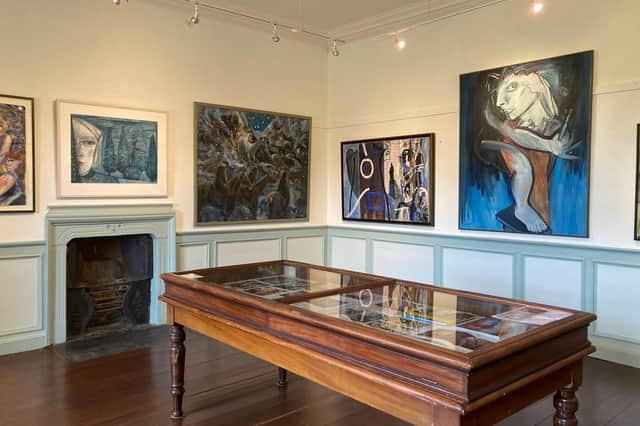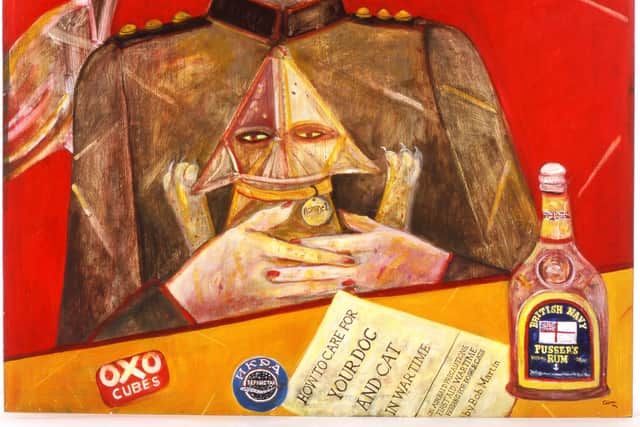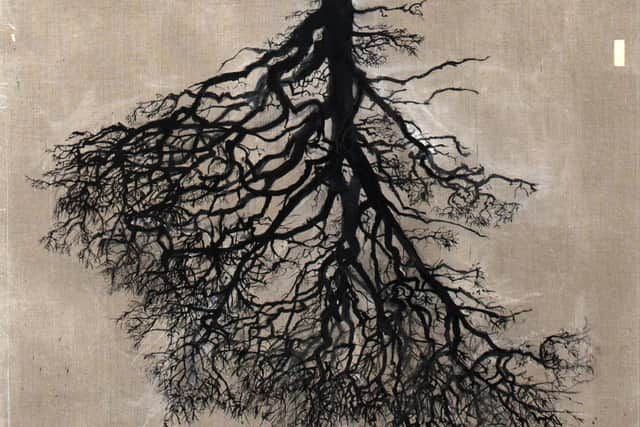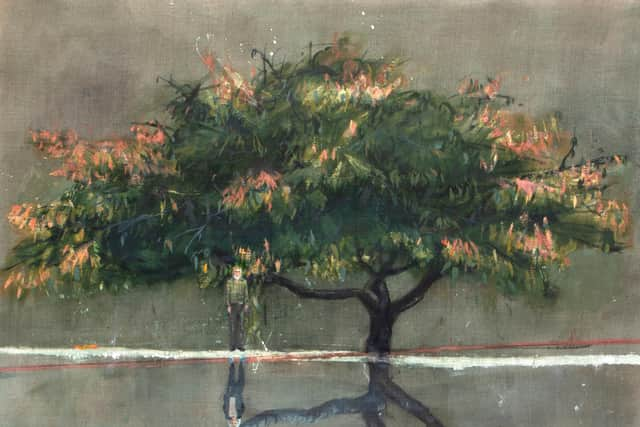Art reviews: Scottish Women Can Paint | Kate Downie


Scottish Women Can Paint, Traquair House ****
Kate Downie: Between Seasons, Gracefield Arts Centre, Dumfries *****
In an interview with German newspaper Der Spiegel in 2013, in what one hopes was a throwaway remark, the painter Georg Baselitz – in response to a question about why women artists were underrepresented in museum collections – said that women don’t paint well.
Advertisement
Hide Ad

The remark is so obviously untrue it barely deserves a response. But the underrepresentation of women in galleries continues. Recent statistics suggest that while 60 per cent of art graduates are female, the percentage of gallery exhibitions given to women is less than 30 per cent.
Curated by Andrew Brown, the former director of Edinburgh’s 369 Gallery, Scottish Women Can Paint is less a riposte to Baselitz than a celebration of the Scottish women artists of the late 20th and early 21st centuries who managed to make their way in this tough world (50 years ago, the gallery figure was less than 10 per cent). Brown has also made a series of video interviews with the living artists in the show, talking about their careers and the obstacles they have overcome.
And so a large group of significant modern and contemporary paintings come to be in a comparatively small space in the High Gallery at Traquair (entry to the exhibition is free, just tell the ticket seller), timed to coincide with the Beyond Borders Festival. These are serious paintings which repay time spent, a spectrum of work by Scotland’s most senior women artists.
The show begins with a small Joan Eardley – a painting of the “kartie” made from a fish box and pram wheels which she used to wheel her paints around Catterline, a near-abstract seascape by Lil Neilson, built up with thick paint and chunks of fishing net, and a beautiful Black Madonna by Anne Redpath.


Pat Douthwaite’s portrait of the goddess Pasiphae, with bird legs and wispy hair, is a creature both fragile and profoundly other. There is a fine large-scale head study by Carole Gibbons, and Lys Hansen’s Portrait Bust with a Pedestal shows the artist herself, brushes in hand, bursting out from sculpted bust, a living woman making her way in a world of (largely male) artistic conventions.
Caroline McNairn’s expressive painting Moscow shows the influences of European modernism, as does the striking work of Margaret Hunter, who trained with Baselitz in Berlin and says he was much more supportive of women artists than the throwaway remark above might suggest.
Advertisement
Hide AdMyths and stories are richly present: Sheila Mullen’s two paintings take their inspiration from poetry, and the beautifully expressive work of June Redfern seems to capture moments in a story, perhaps a personal one. Fionna Carlisle’s richly coloured painting of two women in a garden (actually herself and Caroline McNairn) is rich in the stories of a friendship, and there is great atmosphere and suggestion in Joyce Cairns’ paintings West Ferry Garden at Dusk and Pusser’s Rum.
These women are among the top artists of their generation, with long careers behind them, and one suspects most of them have experienced first hand the challenges of “making it” as a woman in art. Seeing them here is a reminder that we don’t see them enough in other galleries and public collections. It is splendid to see them here, applauded by a jury of their peers.
Advertisement
Hide Ad

A further riposte to Baselitz, if one were needed, is to be found at the Gracefield Arts Centre in Dumfries, which is hosting Kate Downie’s show Between Seasons, presented at the Scottish Gallery in Edinburgh in June. Having built her career around painting a world in motion – roads, bridges, airports, the post-industrial landscape – she spent lockdown at home in rural Fife and found a subject closer to home.
That subject is trees, specifically portraits of trees near her home painted once in summer and then again in mirror image exactly six months later. These superb large-scale paintings are a vivid – almost violent – juxtaposition of seasons. While we stayed at home, nature seemed to march forward vigorously around us. Trees became the hourglasses which marked the passing of lockdown time.
In the densely worked horizon line in the centre of each picture, there are glimpses of time passing: children’s toys in a garden, cyclists flashing past on a road, human time condensed to a blur. The mirror-image portraits show changes too: a new occupant standing by the Manse cherry, a rope swing which appears in summer but vanishes in winter.
In two paintings, Downie uses the mirroring quality of water. In Turn on the Year, she uses paint which is applied then scraped off to suggest the black skeletons of winter trees; only the colour in the water has a suggestion of the changing season. There is also the chance to see the drypoint etchings which capture her first tree ideas, and various studies in watercolour and pastel.
The paintings celebrate tree personalities – the majestic Portobello Wych, the ethereal birch. They are also affirming: living things which every year enact the cycle of death and rebirth, holding all they need for life beneath the ground through the winter months. Through Gracefield’s long windows, we see trees beginning to wear tinges of autumn, and the cycle continues.
Meanwhile, the upper galleries are filled with works from Gracefield’s permanent collection selected by Downie on the theme of the natural world. Well-known artists hang shoulder to shoulder with others rarely seen.
Advertisement
Hide AdIt is wonderful to see Elizabeth Blackadder’s resplendent The Red Bouquet, a reminder of how much she loved colour and how adept she was at using it. There are works by EA Walton and Archie Sutter Watt and contemporary artists such as Edward Summerton and Andy Goldsworthy. There’s the precision of James McIntosh Patrick, and the expressiveness of William Gillies.
However, it’s a particular treat to see artists one rarely encounters: wonderful watercolours by Jane Bennie Fife, a symbolist Tree of Life by Silvana McLean, and a painting by Thomas Train, who worked most of his life in Aberdeen, of trees on a country road illuminated by the headlights of a car. It must be at least 50 years old, but looks as though the paint is barely dry.
Advertisement
Hide Ad*Scottish Women Can Paint, until 15 September; Kate Downie: Between Seasons and Gracefield collection show, until 23 October
A message from the Editor:
Thank you for reading this article. We're more reliant on your support than ever as the shift in consumer habits brought about by coronavirus impacts our advertisers.
If you haven't already, please consider supporting our trusted, fact-checked journalism by taking out a digital subscription at https://www.scotsman.com/subscriptions